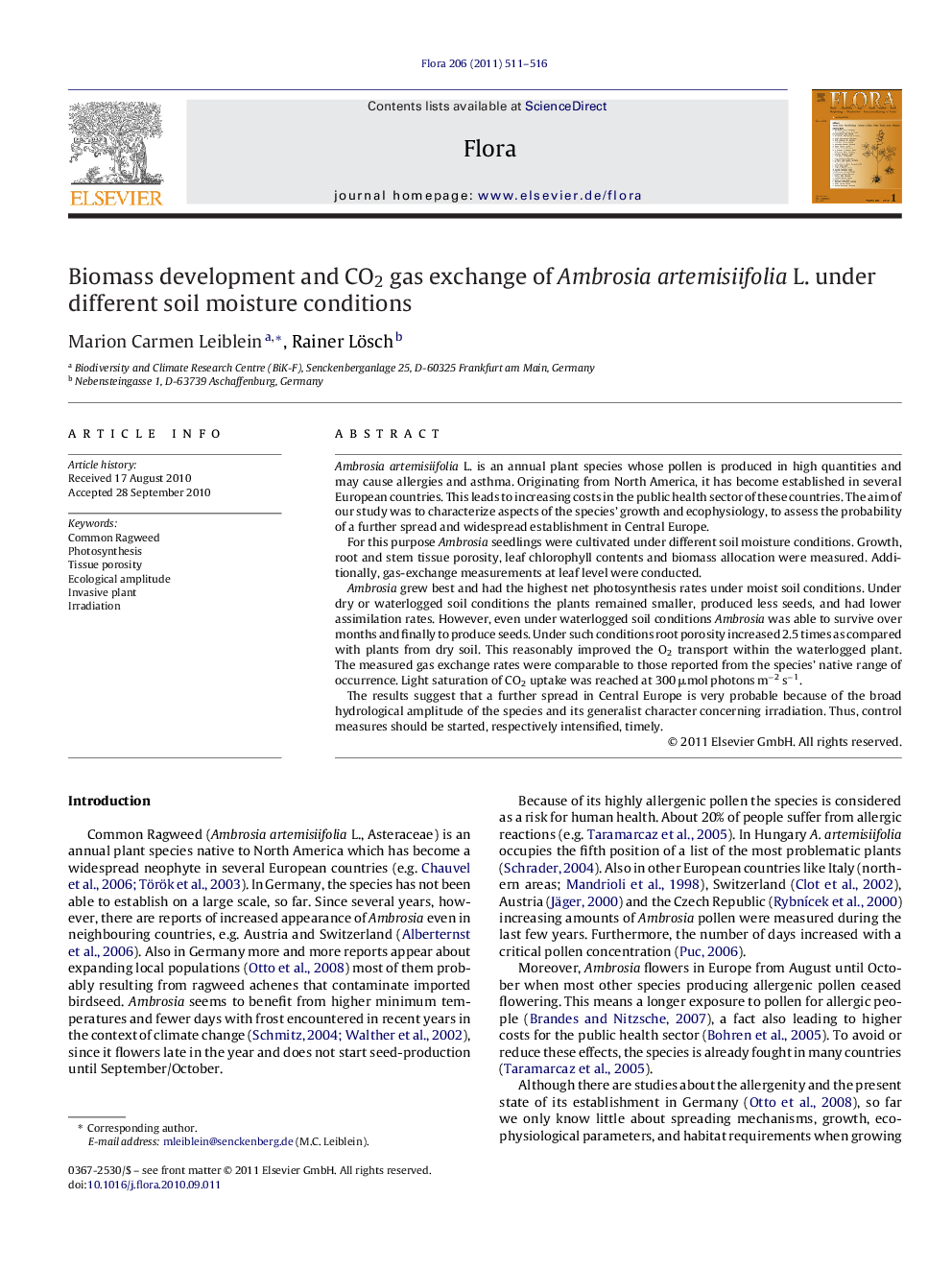| Article ID | Journal | Published Year | Pages | File Type |
|---|---|---|---|---|
| 2179874 | Flora - Morphology, Distribution, Functional Ecology of Plants | 2011 | 6 Pages |
Ambrosia artemisiifolia L. is an annual plant species whose pollen is produced in high quantities and may cause allergies and asthma. Originating from North America, it has become established in several European countries. This leads to increasing costs in the public health sector of these countries. The aim of our study was to characterize aspects of the species’ growth and ecophysiology, to assess the probability of a further spread and widespread establishment in Central Europe.For this purpose Ambrosia seedlings were cultivated under different soil moisture conditions. Growth, root and stem tissue porosity, leaf chlorophyll contents and biomass allocation were measured. Additionally, gas-exchange measurements at leaf level were conducted.Ambrosia grew best and had the highest net photosynthesis rates under moist soil conditions. Under dry or waterlogged soil conditions the plants remained smaller, produced less seeds, and had lower assimilation rates. However, even under waterlogged soil conditions Ambrosia was able to survive over months and finally to produce seeds. Under such conditions root porosity increased 2.5 times as compared with plants from dry soil. This reasonably improved the O2 transport within the waterlogged plant. The measured gas exchange rates were comparable to those reported from the species’ native range of occurrence. Light saturation of CO2 uptake was reached at 300 μmol photons m−2 s−1.The results suggest that a further spread in Central Europe is very probable because of the broad hydrological amplitude of the species and its generalist character concerning irradiation. Thus, control measures should be started, respectively intensified, timely.
